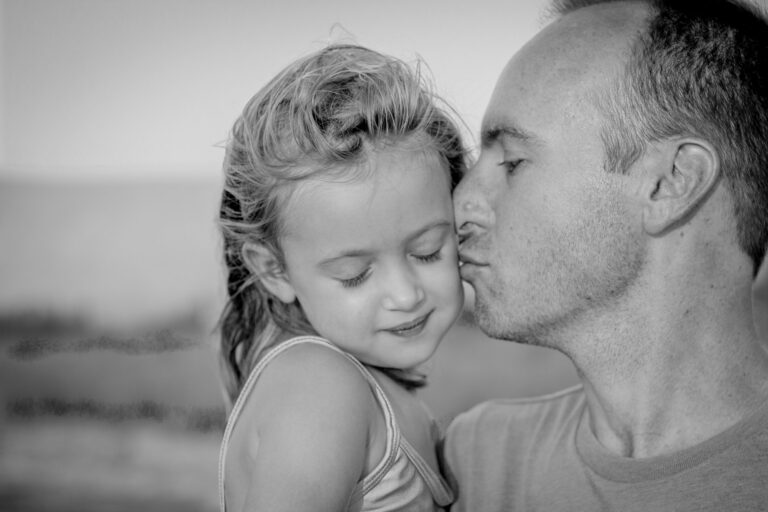When the end of summer tiptoes closer, anxiety and anticipation blend in the air. Many parents wonder: How can we make this back to school preparation meaningful, not just a hurried check of supply lists or a dash through sales at the last minute? The academic year arrives with its own rhythm—a pulse calling for new habits, routines, and emotional equilibrium. While some children bounce with excitement, others may face the transition with hesitation or even dread. Is it simply about buying new textbooks and pencils? Hardly. The entire constellation of sleep patterns, nutrition, emotional readiness, health checks, and family schedules swirls together, demanding thoughtful, stepwise planning. Here, everyday life meets science, strategy and above all, empathy. Let’s unravel solutions to common worries and give every parent the confidence for a gentle, structured start. This journey into effective back to school preparation will explore routine-building, school supply organisation, immunisation, emotional health, and ways to welcome the school year without chaos.
Why Thoughtful Preparation for School Changes Everything
Underestimating the ripple effect of solid back to school preparation is easy. When families gently nudge children’s bedtime earlier, fine-tune breakfast habits or engage in open conversation about school jitters, what is really happening at the physiological level? Clinical research suggests that re-establishing consistent circadian rhythms (the body’s natural clock) supports children’s immune defences, learning capacity, and emotional stability. During the shift from holidays to a stricter morning routine, cortisol—a key hormone—helps the body adapt to new wake-up times, while a predictable breakfast routine keeps blood glucose steady, fuelling cognitive performance.
Beyond biology, early engagement with school materials fosters autonomy and motivation. When a child helps pack their backpack or selects their own lunchbox, small surges of dopamine—the neurotransmitter linked to reward—actually reinforce positive behaviour patterns. Preparing in advance reduces the overall environmental stress, smoothing out morning friction and freeing up mental resources (for both parents and little ones).
Facing Major Educational Shifts
Starting Preschool or Kindergarten: Foundations and Fears
The transition into preschool or kindergarten isn’t only symbolic. Here, mixing with new peers, adhering to group rules, and learning turn-taking activates core areas in a child’s developing brain—particularly those governing social-emotional skills. Some children exhibit regression behaviours (clinginess, tears) after the initial excitement fades. This is not a setback but a biological response as the limbic system seeks security in the face of change. Gently reinforcing the school’s routines—described as a shared choreography rather than a strict set of rules—helps anchor your child, making their place in the group less daunting.
First Grade: Emerging Independence
Entering first grade marks the crossing from play-focused learning to structured academics. Reading, writing, and early numeracy depend not only on classroom instruction but on neurodevelopmental readiness. Children will often juggle new tasks—organising their workbooks, shouldering their satchel, scheduling homework time—which can feel overwhelming. Here, reminders from home (like a checklist or visual schedule), regular parental encouragement, and opportunities to celebrate small victories are instrumental. The diversity in children’s learning speeds is normal and expected; building on strengths nurtures both competence and confidence.
Discovering and Feeling Comfortable in the School Setting
For many, the architecture of a new school—a maze of corridors, huge classrooms, strange playgrounds—may evoke uncertainty. Participating in orientation sessions or, when not available, exploring the campus together after school hours is essential. Allowing a child to visualise entry and pick-up points, cafeteria doors, or the route to their classroom can mitigate the body’s sympathetic (“fight-or-flight”) reaction to unfamiliar settings. Neuroscientific studies indicate that repetition and familiarity decrease the amygdala’s fear response, allowing children to settle, learn, and connect more deeply with peers and teachers.
Weaving Learning into Everyday Life
Is “homework” during the break necessary? Parents sometimes oscillate between encouraging full relaxation or keeping up with worksheets. Yet, real-world interactions—like reading road signs en route to a family function or measuring ingredients for a recipe—may be equally effective. Such activities create powerful neurological connections (“synaptic pruning” and “plasticity”), making academic concepts tangible. Integrating observation skills (spotting birds during a park visit) and numeracy (counting blue cars in traffic) turns daily life into an ongoing learning platform, reinforcing knowledge through rich sensory and emotional experiences.
Mastering School Supplies and Essentials
For Preschool and Kindergarten
Choosing just the right school bag might sound trivial, yet ergonomics and emotional buy-in matter. Opt for a lightweight bag with one spacious pocket (ideal for folders, snacks, or a comfort item). Allowing children to practice packing their bag builds both responsibility and a sense of accomplishment.
For Elementary School
Older children are expected to take on more. Collaborative selection of a backpack (sturdy, easy zips, ample compartments) reduces early wear and promotes independent organisation. Carefully reviewing and personalising the school’s supply list avoids waste and unnecessary spending. Shopping together transforms supply gathering into an empowering family event.
- Clean out last year’s unused items—reusing where possible—teaches environmental consciousness.
- Use labelled containers to streamline morning routines.
- Label every item to decrease the chances of loss and build accountability.
Setting up a dedicated home station for these essentials can shortcut morning scrambles.
Transforming School Shopping Into a Rite of Passage
Supply shopping is not merely functional. Children sorting, arranging, or choosing colours for their gear come to see themselves as capable students. Ritualising this process as a shared activity strengthens family bonds, enhancing not just preparedness but overall self-esteem.
Updating Wardrobes and School Gear
Before falling for every sale or enticing display, pause and sort through existing clothes. Some children experience rapid growth spurts—last year’s uniforms may not fit as expected. Making a list focused on comfort, climate, and daily practicality streamlines both shopping and budgeting. Including a child in selecting a special “first day” outfit taps into intrinsic motivation and fosters a sense of occasion. Labelling lunchboxes, shoes, and jackets reduces confusion in busy common areas.
Building New Routines: Sleep, Nutrition, and Emotional Balance
Dieticians and paediatricians agree: returning to consistent bedtimes and mealtimes well before school starts supports not just behavioural readiness but key bodily functions like immunity and metabolism. The pineal gland, which regulates sleep, anticipates environmental cues—so extending the summer sleep schedule to the last minute can prolong morning crankiness and disturb concentration. Start adjustments 10-14 days before the first bell.
The evening before, involve your child in choosing clothes and packing bags. These simple rituals soothe the nervous system, promote executive function (like planning), and create stability.
After school, establishing a set time for homework and a family check-in ritual (perhaps over a snack) reinforces the link between effort, learning, and feeling valued. Avoid comparing siblings or classmates. Each child’s trajectory is unique—chart progress in steps, not just grades.
Harmonising School, Home, and Extracurricular Activities
Enrolling in extracurricular activities builds social skills and broadens interests, but excessive scheduling can tip the balance towards fatigue and irritability. Ample time for free play—unstructured, self-directed, and open-ended—allows the brain to consolidate new experiences. Maintaining predictable family routine times (shared lunch, game nights) nurtures emotional connection and supports mental health.
Utilise a visible family calendar for all activities, setting aside time for play, work, and rest. Written reminders help children internalise time management and responsibility.
Nurturing Independence and Self-Motivation
Involving children in planning for the school year (what challenges to anticipate, what excites them, which friends they hope to reconnect with) energises a collaborative approach. Review highlights of the previous year, then break new ambitions into achievable steps. Place goals—academic or personal—somewhere prominent. Praise persistence and effort as much as results, supporting self-esteem.
Crafting Study-Friendly Environments
A tidy, distraction-free workspace sets the tone for focus. Good lighting and basic supplies on hand—sharpened pencils, erasers, clean paper—make for seamless study sessions. Limit digital distractions: a basket for mobiles during homework fosters longer attention spans. Short study breaks, movement, and opportunities for children to arrange their own spaces build autonomy.
Ensuring Good Mental and Emotional Health
Well before the first bell, open discussions on school—What are you hoping for? Anything you’re worried about?—allow anxieties to surface without judgement. Mixing realistic perspectives (some days will feel tough, others exciting) with practical rehearsal—walking through morning routines, simulating a classroom environment, even practicing farewells—helps. Early connection with classmates (playdates, video calls) nurtures belonging. Encourage children to talk about their emotions and to understand that bravery is not the absence of fear but action despite it.
Digital and Device Readiness: Safety First
Ensure that devices for learning are functioning, secure, and equipped with school-required applications or resources. Discuss the importance of strong passwords and the basics of digital safety. Paediatric recommendations suggest clear limits for screen time; frequent breaks can prevent fatigue and safeguard vision. Regularly back up homework and creative projects—nothing frustrates a young learner quite as much as lost work.
Staying in Touch: School Communication and Safety
Introducing yourself to teachers and admin staff early sets the tone for constructive partnership. Share any pertinent family or medical information, reinforcing that schools and parents are a team. Talk through safety rules for the journey—crosswalks, bus etiquette, who is authorised for pick-up. Navigating these transitions might take repeated practice with small reminders, but the reward is lasting peace of mind.
Challenging Transitions: Special Circumstances
Starting at a new school, mid-year move, a shift to remote learning, or entering with special medical needs? Preparation is not one-size-fits-all. Whenever possible, tour new spaces in advance, introduce new teachers early, and simulate daily routines together. For children requiring accommodations, proactive communication and tailored support plans simplify the process.
Parents: You Count Too
Efficient use of planners and reminders (including digital tools or simple wall calendars) helps parents stay on top of school, health, and home commitments. Regular, shared routines for meals, laundry or shopping (ideally not left until nightfall) lighten the load for all. Self-care is not selfish—regular check-ins (time for a walk or phone call with a friend) support mental stamina, benefiting the whole family.
Back to School Countdown: The Family Checklist
Begin preparations a few weeks in advance, chunking tasks weekly—uniform checks, immunisation records, supplies. Use a family calendar for visibility. Celebrate the first morning with a ritual—perhaps a photograph, favourite dish, or literary quote in the lunchbox. Acknowledge the effort you and your child have made. Back to school preparation becomes a memory in itself.
Key Takeaways
- Anticipating and supporting every aspect of the back to school preparation process—routine, supply, health, and emotional readiness—gives children a stable platform for academic and social growth.
- Even small, consistent actions—like shared breakfasts or evening bag-packing—can make transitions smoother.
- Supportive relationships, both at home and with school staff, transform nerves into optimism.
- Children’s independence blooms when parents balance guidance with growing responsibility.
- When in doubt, reliable resources and professionals are available to offer tailored advice and reassurance.
- For ongoing support, download the application Heloa for personalised guidance and free paediatric health questionnaires.
Questions Parents Ask
What steps can help make the first day of school less stressful for my child?
Start by having an open discussion about the first day—cover drop-off plans, who will greet them, and any special arrangements. If possible, walk or drive the route with your child before school starts. Packing bags, uniforms, and a tasty snack the previous night helps mornings go more smoothly. Above all, acknowledge that mixed feelings are absolutely normal. Let your child know you trust their ability to adjust, but stay present for any questions or concerns they might have.
How can I encourage a positive attitude toward returning to school?
Set the stage by sharing your own meaningful moments at school—what made you laugh, what you enjoyed learning. Ask your child what they’re eager to do, even if it’s a small thing like drawing in a new notebook. Keep conversations gentle, validate their concerns, and work together to set small, achievable ambitions for the first weeks. Starting rituals, like a special breakfast or first-day outfit, can transform nerves into anticipation.
Is it necessary to update vaccinations before school starts?
Absolutely. Children should have up-to-date immunisations to protect their own health and that of classmates. Many schools request proof, especially for key vaccines like DPT, MMR, and polio. If you’re uncertain about the schedule, consult your healthcare provider—they can clarify outstanding shots or catch-up recommendations. Keeping vaccines current shields your child from preventable illnesses, easing the transition into active school life.
Further reading:









